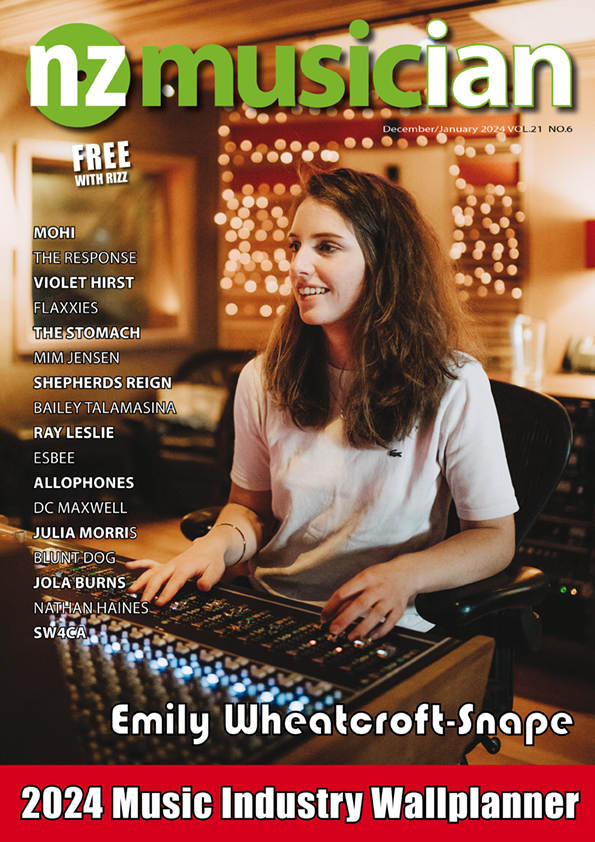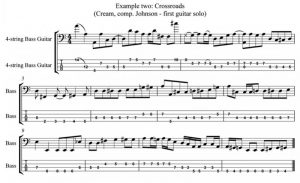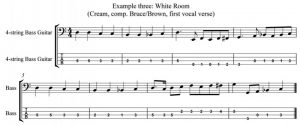Deep Thinking: Jack Bruce (1943 – 2014)
Deep Thinking: Jack Bruce (1943 – 2014)
Many readers of the Deep Thinking column will be familiar with British trio Cream, one of the bands of the late 1960s that moved from blues-based improvisation to experimental progressive rock, and influenced later bands taking a similar route – bands such as Led Zeppelin.
Jack Bruce, Ginger Baker and Eric Clapton only stayed together for two years, from 1966 to 1968 (although their final Cream album, ‘Goodbye’ was released in 1969). In their short career, they produced four seminal albums that influenced musicians all over the world and established each band member as an instrumental leader in his field. Cream disbanded due to tensions between members but some of their songs, and in particular, their riffs, remain iconic to the present day.
Sadly Cream’s bassist, Jack Bruce, passed away in October. I had known him since the 1980s and, although Jack was a major reason for me taking up bass in my teens, I never told him. I’m sure he knew though! He was a very kind man and was generous in his praise for his peers.
I have transcribed some of his work for this issue of NZM that demonstrates his classical background as a cellist who had studied J.S. Bach, and demonstrate his use of counterpoint (where two lines are interdependent in harmony yet are rhythmically independent). One would think that a blues tune would not be the best vehicle for this musical technique but Bruce’s lines in Cream’s live version of Robert Johnson’s Crossroads, from the album ‘Wheels of Fire’ (1968), demonstrate that Bruce could bring Bach to the blues.
The first 12 bar transcription is the first vocal verse of the song, which was sung by Eric Clapton. It is mainly built around an A minor pentatonic riff and follows a typical 12 bar blues pattern. In the tenth bar, however, Bruce moves up to F# (the major third of D major) and then returns through E, D and C (instead of playing the root of the IV chord, D major, throughout the bar). He then finishes the sequence on the A minor pentatonic riff.
By the time the tune gets to the first guitar solo, however, Bruce becomes more adventurous, almost challenging Clapton to move on to greater heights. Bruce is using some of the upper register of his bass, a very high A to start, and, in the second bar of the 12 bar sequence, he again introduces the F#, the major third of D, before moving to a high C# to reintroduce the A7 chord of bar three (in which he mainly focuses on the seventh of the chord, G).
By bar five, he is not only using the contrapuntal chromaticism mentioned earlier, he is also syncopating with the guitar and drums. Bars seven and eight share the same chromatic approach but the lines are played as quavers, or eighth notes. In bar nine, he uses another Bach influence by moving from low E to Eb almost an octave above, which resolves to a D major figure and back to the final two bars of the A minor pentatonic figure, to which he has added several chromatic passing notes.
The third example is the first eight vocal bars of White Room, from the same album. The first two bars are relatively simple, a crotchet pattern moving down from D to C, B and Bb under a guitar chord sequence of D, C, G/B and Bb. In bars three and four, however, Bruce again uses a contrapuntal line that is played in contrast to the guitar chords while fitting them harmonically. Bars five and six are the same as bars one and two, but bars seven and eight have the contrapuntal sequence moved up an octave.
For gear watchers, Bruce originally played a Fender Bass Six, before changing to a Danelectro when Cream formed. He was best known for using a Gibson EB3 for most of his time in Cream and for later projects, and he used a Gibson EB1 at the Cream reunions in 2005. In his final years he favoured a Warwick Thumb fretless bass. He used large banks of Marshall equipment in Cream, although in later years, he switched to Hartke amplification.
Dr. Rob Burns is an Associate Professor in Music at the University of Otago in Dunedin. As a former professional studio bassist in the UK, he performed and recorded with David Gilmour, Pete Townsend, Jerry Donahue, Isaac Hayes, Sam and Dave, James Burton, Ian Paice and Jon Lord. He played of the soundtracks of many UK television shows, such as Red Dwarf, Mr. Bean, Blackadder, Not the Nine OClock News and Alas Smith and Jones. Rob is currently a member of Dunedin bands Subject2change and The Verlaines.




